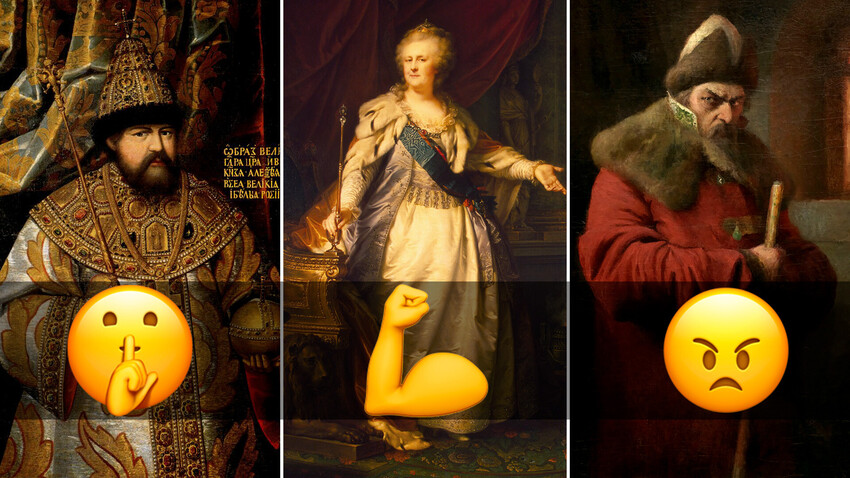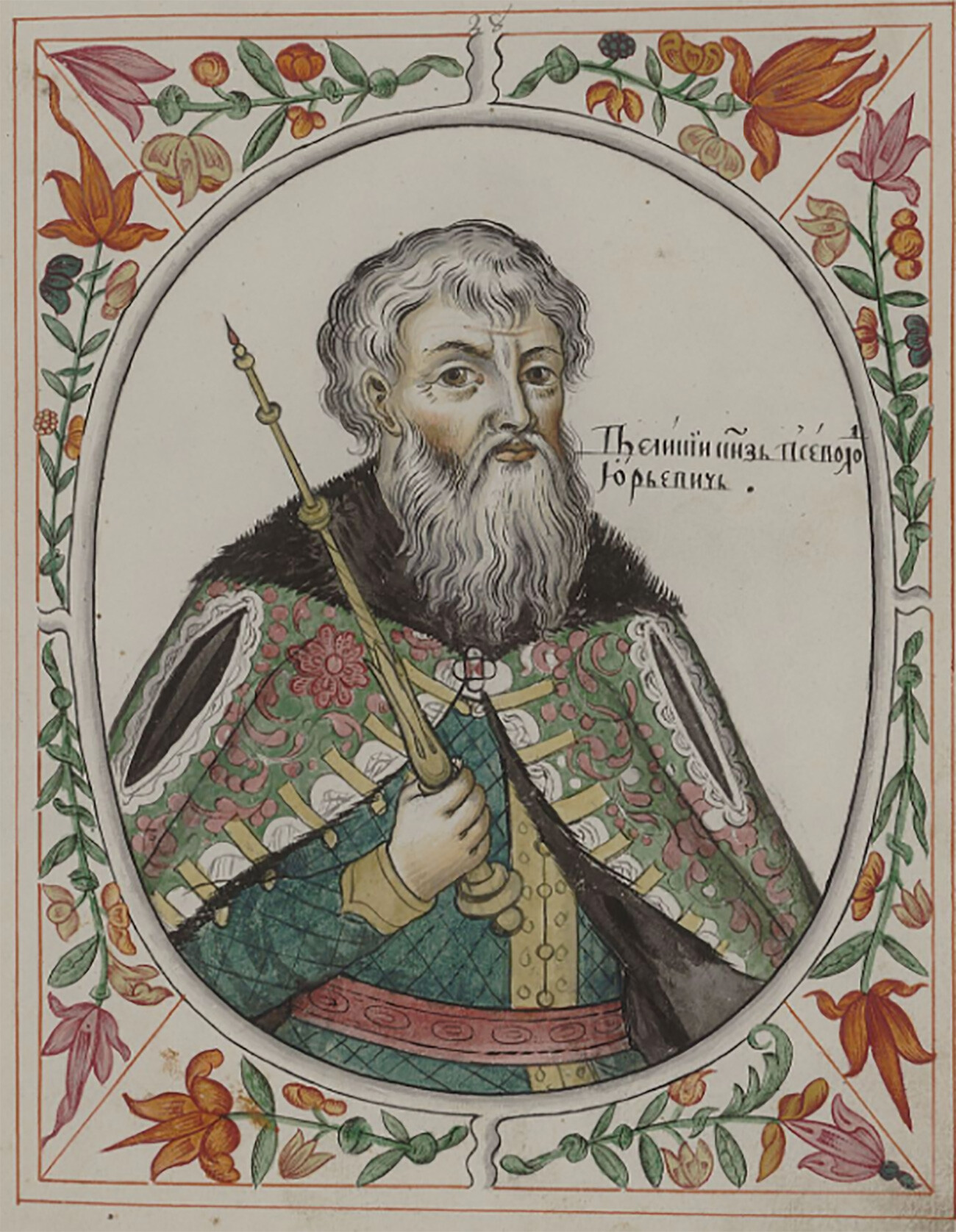
One version of how Prince Oleg, the successor of Rurik, got his nickname, is described in the ‘Primary Chronicle’ – one of the first historical manuscripts about the events in Russia of that time.

In 907, Oleg decided to wage war and capture Constantinople (in the chronicle the city is called Tsargrad), the capital of Byzantium. The Greeks, who knew about the invasion, closed off the bay, through which the ships of the Russian army could have entered the city. Then, Oleg ordered to pull the boats to shore and put them on wheels – such a method of traversing land on ships wasn’t anything unusual; it was often used. However, this time, when the wind rose, the sails caught it and the ships began to move towards Constantinople like siege towers; the Greeks were seriously frightened and they opened the city gates. Perhaps, such a sight could have seemed like a miracle to the southerners.
However, the Greeks still hoped to best the prince by their cunning. They brought out poisoned food and wine, but Oleg rejected them. As a result, the prince forced Constantinople to pay tribute to many large cities of Russia and acquired the nickname ‘the Wise’ because of his feat.
In modern Russian, his nickname (‘Veshchy’) means ‘the foreseeing’; however, in Ancient Russian, it meant ‘the wise’, so, there’s actually no connection whatsoever to him foretelling the future.

This Kievan Rus’ ruler received the nickname ‘the Wise’ as a result of his rule. That being said, he received it not during his lifetime, but only several centuries later: the nickname stuck with him only in the 1860s in Russian historiography.
For example, it was under him when culture began to spread and education came to be valued; the population of the country began to increase manifold. He also created the first known body of laws called ‘Russkaya Pravda’ (‘Rus’ Truth’) – it became the foundation of Russian law right until the 15th-16th centuries.
He was also a great diplomat and managed to build friendly relations with Sweden, Byzantium, the Holy Roman Empire and other European countries.

This son of Yuri Dolgoruky ruled Rus’ at the beginning of the 12th century. He continued to popularize the Christian faith through building churches and cathedrals; he also significantly developed stone architecture. But, he didn’t get his nickname for that, but rather for his own method of assuming power in the country – in separate regions, he would often put a relative of his at the helm (both close and very distant), whom he had plenty of. Vsevolod had 12 children, eight of which were sons.

One of the reasons why the first tsar of Russia received the nickname ‘the Terrible’ were his character traits – his brutality and vindictiveness. Public executions, the first mass repressions, torture in prisons – all of the aforementioned accompanied his rule. The founding of oprichnina played an especially significant role in this: the tsar split the territory of Russia into ‘zemshchina’, where the boyar rule persisted, and ‘oprichnina’, which Ivan ruled with the help of his personal guard – the ‘oprichniki’. The latter were famous for their incredible brutality.
However, no one called Ivan ‘the Terrible’ during his lifetime. And the “norm for violence” was different in medieval times, as opposed to today. In the 16th century, he was simply Ivan Vasilievich; the nickname ‘the Terrible’ was given to him later.

Tsar Alexei Michailovich remained in people’s memory with the nickname ‘Most Quiet’. Many historians wonder why that was, since the times when he ruled were far from “quiet”.
He ascended to the throne after the ‘Time of Troubles’ – the period of Russian history marked by the invasion of impostor rulers, foreign intervention, as well as a severe statehood crisis. His responsibilities included fixing the consequences of the ‘Time of Troubles’ – to tackle this, Alexei Mikhailovich established the ‘Sobornoye Ulozheniye’ (‘the Council Code’), which became a new foundation for Russian law; it replaced the old body of laws, ‘Russkaya Pravda’, created back in the 10th century by Yaroslav the Wise.
Despite his efforts to tackle the crises, some of his decisions led to completely opposite results. During his rule, two large riots took place. The ‘Salt Riot’ and ‘Copper Riot’, as well as one uprising that was caused by an excessive feudal pressure on people – in particular, by the indefinite pursuit of runaway peasants. However, the people still loved the tsar, because he dedicated a giant part of his life to prayers, to fasting and to visiting holy places, for which he received his nickname ‘Most Quiet’, meaning, in the Christian sense, humble.

This emperor received his nickname during his lifetime. Although many contemporaries of the tsar viewed the results of his work in a critical light, even they found it hard to deny how strongly the reforms of Peter the Great had impacted the country’s further development.
A lot of people are familiar with the phrase that Peter the Great “cut open a window to Europe”, which, overall, describes what the emperor did. He strove, first of all, to shed the outdated, as he believed, way of life and to instill secular Europeanized culture into his people. Under him, the first secular educational institutions opened, the first printed newspaper was founded; many foreign books were, for the first time, translated into the Russian language. Under him, Russia became a military superpower.

Catherine also got her nickname during her lifetime. The era of her rule is known by many historians as the “golden age of Russian nobility”. She relieved the nobles from military service and from paying taxes and allowed them to conduct business activities. The peasantry, on the other hand, wasn’t so lucky under her: they weren’t even allowed to complain about their owners.
But, it was not the peasants who called her ‘the Great’. On top of that, she really did rack up a long list of merits: from popularizing school education and founding the Hermitage collection to fighting smallpox.
Catherine was first called ‘the Great’ in 1767 – it was done by the Legislative Commission that she herself assembled. The Commission’s task was to systematize the country’s laws, but, instead, it dedicated several of its first sittings to which title should be assigned to the empress in gratitude for her initiative in creating the organization.
There were several options. Catherine didn’t like the title ‘the Great’. She believed that the significance of her deeds should be evaluated by future generations. The empress agreed to accept the title of ‘the Mother of the Fatherland’, but her subjects and courtiers still continued to call her ‘the Great’.

There were a lot of things for which Alexander I could have been called ‘the Blessed’. For example, for his reforms that significantly improved the position of the peasantry. But, it was his victory over Napoleon in 1812 that significantly reinforced his authority. It was then when the Russian Empire received the status of an almighty superpower in the global arena, as well as the status of the country that managed to restore peace in Europe. Two years after the end of the war, the Senate officially assigned Alexander I the title ‘the Blessed, Magnanimous Restorer of Countries’.
If using any of Russia Beyond's content, partly or in full, always provide an active hyperlink to the original material.
Subscribe
to our newsletter!
Get the week's best stories straight to your inbox